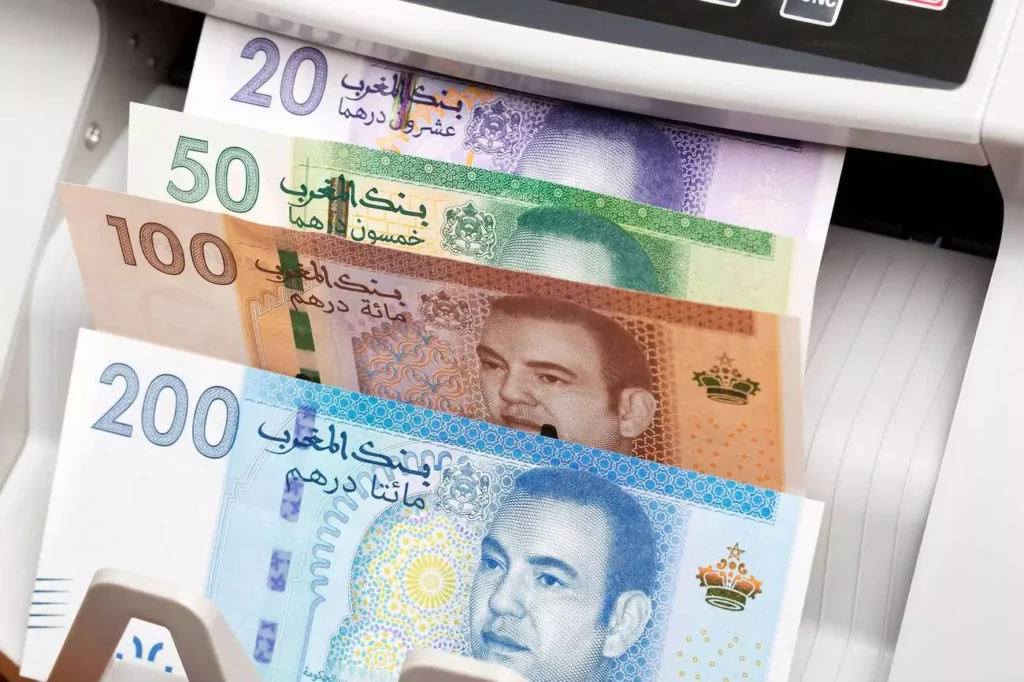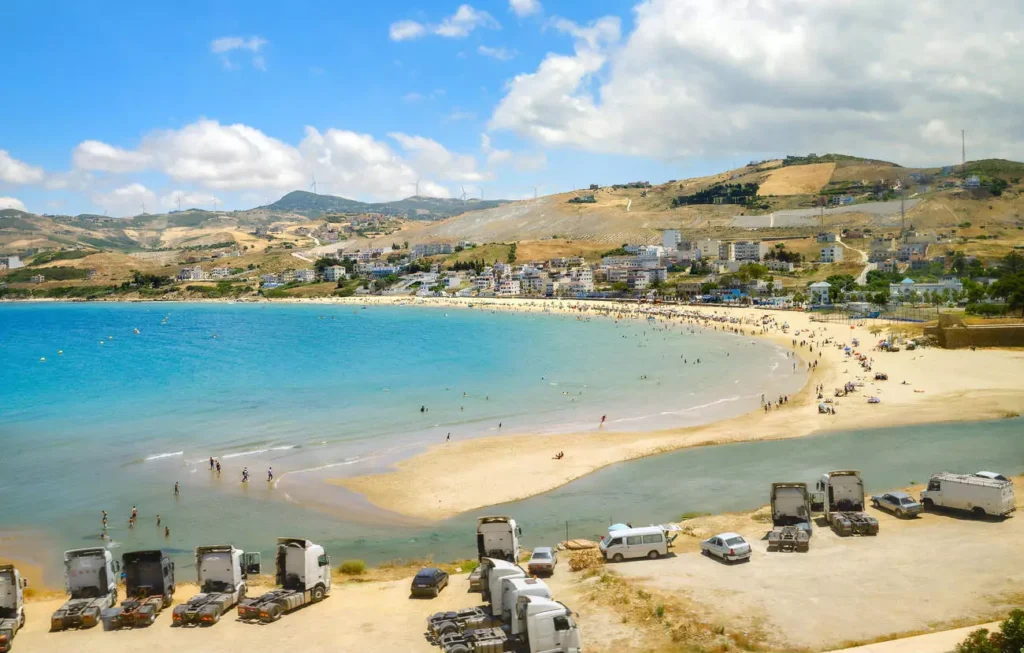Are you dreaming of vibrant bazaars filled with colorful spices, ancient medinas with winding alleys, breathtaking desert landscapes, and rich cultural experiences? Look no further than Morocco—a captivating North African kingdom where tradition and modernity blend seamlessly. This comprehensive Morocco travel guide will equip you with everything you need to know to plan an unforgettable journey through this fascinating country.
Why Morocco is a Must-Visit Destination
Morocco is a land of contrasts—colorful souks, serene blue towns, sweeping deserts, and towering mountains—offering endless adventures for every traveler.
What makes Morocco truly special is its unique position at the crossroads of African, Arab, and European influences, creating a cultural tapestry that’s entirely its own. The country’s legendary hospitality, exquisite cuisine, and remarkable landscapes consistently make it one of North Africa’s most rewarding travel experiences.
In this comprehensive Morocco travel guide, we’ll cover everything from planning essentials and top destinations to practical tips that will help you make the most of your Moroccan adventure.
Essential Pre-Trip Planning
Best Times to Visit
Morocco experiences diverse climates across its regions:
| Season | Months | Experience | Notes |
|---|---|---|---|
| Spring | March-May | Ideal temperatures, blooming landscapes | Peak tourist season, higher prices |
| Summer | June-August | Hot in cities and desert, pleasant in mountains | Avoid desert areas, focus on coastal regions |
| Fall | September-November | Warm days, cool nights, fewer crowds | Excellent all-around travel time |
| Winter | December-February | Cool, occasional rain, snow in mountains | Budget-friendly, perfect for southern regions |
Key festivals worth planning around include:
- Ramadan (dates vary yearly)
- Festival of World Sacred Music (June, Fes)
- Marrakech Popular Arts Festival (July)
- Rose Festival (May, Kalaat M’Gouna)
Visa, Passport, and Entry Requirements
If you’re coming from the US, UK, EU, Australia, or Canada, good news—you can visit Morocco without a visa for up to 90 days. Just make sure your passport is valid for at least six months after you plan to leave. Entry rules can change, so it’s always smart to check for updates before you travel.
Health, Vaccinations, and Travel Insurance
While no mandatory vaccinations are required for Morocco travel, recommended ones include:
- Routine vaccines (MMR, diphtheria-tetanus-pertussis, etc.)
- Hepatitis A
- Typhoid
Comprehensive travel insurance is a must when visiting Morocco—it gives you peace of mind in case of medical issues, trip cancellations, or lost belongings. Look for policies covering medical emergencies, evacuation, trip cancellation, and luggage protection.
Safety & Cultural Etiquette
Morocco is generally safe for travelers, but it’s important to remain vigilant in tourist areas where petty theft can occur. Women travelers should dress modestly, particularly in rural areas.
Key cultural do’s and don’ts:
- Do dress modestly, especially at religious sites
- Do learn basic greetings in Arabic or French
- Don’t photograph people without permission
- Don’t display excessive public affection
- Do remove shoes when entering homes or certain areas of riads
- Don’t eat with your left hand (traditionally considered unclean)
Money Matters
The Dirham (MAD), which is used in Morocco, is only available once you are there. ATMs are widely available in cities and towns, and credit cards are accepted at most hotels and upscale restaurants.

Budgeting guideline per person per day:
- Budget: 300-500 MAD ($30-50)
- Mid-range: 500-1000 MAD ($50-100)
- Luxury: 1000+ MAD ($100+)
Tipping (known locally as “baksheesh”) is customary. A general guideline is 10% in restaurants, 10-20 MAD for hotel staff, and 10-20% for guides.
Basic Language Phrases
While many Moroccans in tourist areas speak English, knowing a few basic phrases will enhance your experience:
Arabic/Darija:
- Hello: Salam (سلام)
- Thank you: Shukran (شكرا)
- Yes/No: Na’am/La (نعم/لا)
- Please: Min fadlak (من فضلك)
French:
- Hello: Bonjour
- Thank you: Merci
- Yes/No: Oui/Non
- Please: S’il vous plaît
Getting To and Around Morocco
Flights and Main Airports
The main international gateways to Morocco are:
- Mohammed V International Airport (Casablanca)
- Marrakech Menara Airport
- Fes-Saïs Airport
- Tangier Ibn Battouta Airport
Getting to Morocco is easy—there are direct flights from loads of cities across Europe. If you’re coming from North America, Asia, or Australia, you’ll need to take a connecting flight.
Transportation Within Morocco
Morocco offers diverse transportation options:
- Trains: The most pleasant way to get from one big city to another. A dependable network that links Tangier, Rabat, Casablanca, Marrakech, Fes, and Meknes is run by ONCF.
- Buses: Extensive and affordable network. CTM and Supratours are the most reliable companies.
- Grand Taxis: Shared Mercedes sedans that operate on set routes between towns. They leave when full (6 passengers).
- Petit Taxis: Smaller city taxis (usually colored) that operate within city limits. Always insist on the meter or negotiate before departing.
- Car Rental: Gives you flexibility but requires confidence on Moroccan roads. International driving permit recommended.
Top Destinations & Key Experiences
Major Cities
Marrakech – The Red City
- Must-see: Jemaa el-Fnaa Square, Majorelle Gardens
- Experience: Explore the medina and stop at a traditional hammam.
Fes – Cultural Capital
- Must-see: Ancient Fes El Bali medina, Al-Qarawiyyin University
- Experience: Leather tanneries, artisan workshops
Chefchaouen – The Blue Pearl
- Must-see: The blue-washed medina
- Experience: Hiking in the surrounding Rif Mountains
Rabat – The Capital
- Must-see: Kasbah of the Udayas, Hassan Tower
- Experience: Modern Morocco alongside historical sites
Essaouira – Coastal Charm
- Must-see: UNESCO-listed medina, fishing harbor
- Experience: Windsurfing, fresh seafood
Sahara Desert Adventures
The majestic Sahara is a highlight of any Morocco travel itinerary. Most desert excursions depart from:
- Merzouga (for Erg Chebbi dunes)
- M’Hamid (for Erg Chigaga dunes)
Typical desert experiences include:
- Camel trekking
- Overnight stays in desert camps
- Stargazing in pollution-free skies
- Berber music around campfires
Tip: Choose multi-day tours for a more authentic experience away from tourist crowds.
Atlas Mountains
The Atlas mountain range offers spectacular scenery and cultural insights:
- Hiking opportunities range from easy day walks to challenging multi-day treks
- Visit traditional Berber villages
- Mount Toubkal, North Africa’s highest peak (4,167m), offers advanced hiking
- Ourika Valley provides accessible day trips from Marrakech
Coastal Regions
Morocco’s 1,200 miles of coastline feature stunning beaches and seaside towns:
- Agadir: Resort destination with modern amenities
- Taghazout: Surfing hotspot
- Essaouira: Windy city with Portuguese influences
- Asilah: Whitewashed Mediterranean charm

Unique Cultural Experiences
Immerse yourself in Moroccan culture through:
- Hammams: Traditional bathhouses offering scrub treatments
- Souks: Vibrant marketplaces for everything from spices to handicrafts
- Cooking Classes: Learn to prepare tajine, couscous and other Moroccan specialties
- Mint Tea Ceremonies: Experience Moroccan hospitality
- Artisan Workshops: Watch craftspeople creating ceramics, textiles, and leatherwork
Accommodation Styles in Morocco
Morocco offers unique accommodation options:
Riads – Traditional houses with interior courtyards, often converted into boutique hotels. Expect ornate decoration, personalized service, and a peaceful atmosphere away from street noise.
Dars – Similar to riads but generally smaller and with an open courtyard.
Desert Camps – Range from basic tents to luxury glamping experiences.
Hotels – From international chains to locally-owned properties across all price points.
Hostels – Budget-friendly options in major cities and tourist destinations.
Booking Tips:
- Reserve riads well in advance for high season
- Confirm airport transfers when possible
- Check location carefully, especially in medinas where navigation can be challenging
- Read recent reviews for the most up-to-date information
Introduction to Moroccan Cuisine
A highlight of any visit is Moroccan cuisine, which combines Mediterranean, Andalusian, Arabic, and Berber flavors.
Must-Try Dishes:
- Tajine: Slow-cooked stew named after the conical clay pot it’s prepared in
- Couscous: Typically served with vegetables and meat on Fridays
- Pastilla: Sweet and savory pie traditionally made with pigeon
- Harira: Hearty soup often eaten during Ramadan
- Mint Tea: The national drink, ceremoniously poured from height
Dining Tips:
- Eat with your right hand when dining traditionally
- Expect to share dishes family-style
- Try street food, but choose busy stalls with high turnover
- Be cautious with tap water; stick to bottled water
Sample Itinerary Ideas
Classic Morocco (10 Days)
- Days 1-3: Marrakech
- Day 4: Day trip to Atlas Mountains
- Days 5-6: Sahara Desert excursion
- Days 7-8: Fes
- Days 9-10: Chefchaouen and return
Extended Exploration (14+ Days)
- Days 1-3: Casablanca and Rabat
- Days 4-5: Chefchaouen
- Days 6-8: Fes and Meknes
- Days 9-11: Sahara Desert tour
- Days 12-14: Marrakech
- Days 15-16: Essaouira
Practical Travel Tips & Final Advice
Packing Essentials:
- Modest, lightweight clothing (layers for desert temperature changes)
- Comfortable walking shoes
- Scarf for women (for visiting religious sites)
- Sunscreen, hat, and sunglasses
- Basic first-aid kit
- Power adapter (Morocco uses type C/E plugs)
Staying Connected:
- Purchase a local SIM card (Maroc Telecom, Orange, or inwi)
- Many riads, cafes, and restaurants offer free Wi-Fi
- Download offline maps before traveling to medinas
Responsible Travel:
- Respect local customs and dress codes
- Ask permission before photographing people
- Support local artisans and businesses
- Be mindful of water consumption in this drought-prone country
- Consider carbon offsetting your flights
Final Thoughts
Morocco travel offers a magical blend of ancient traditions and breathtaking landscapes that create memories to last a lifetime. From navigating bustling medinas to watching the sunrise over Saharan dunes, Morocco rewards travelers with authentic experiences and warm hospitality.
The country’s diversity means there’s something for everyone—whether you’re a history buff, adventure seeker, culinary enthusiast, or cultural explorer. By planning ahead with this Morocco travel guide, you’ll be well-prepared to make the most of your journey through this captivating North African kingdom.
Remember that embracing the unexpected is part of the adventure when traveling in Morocco. Allow yourself time to wander, connect with locals, and savor the moments that can’t be planned. Your Moroccan journey awaits—prepare to be enchanted!
Have you experienced the magic of Morocco travel? Share your experiences or questions in the comments below!
